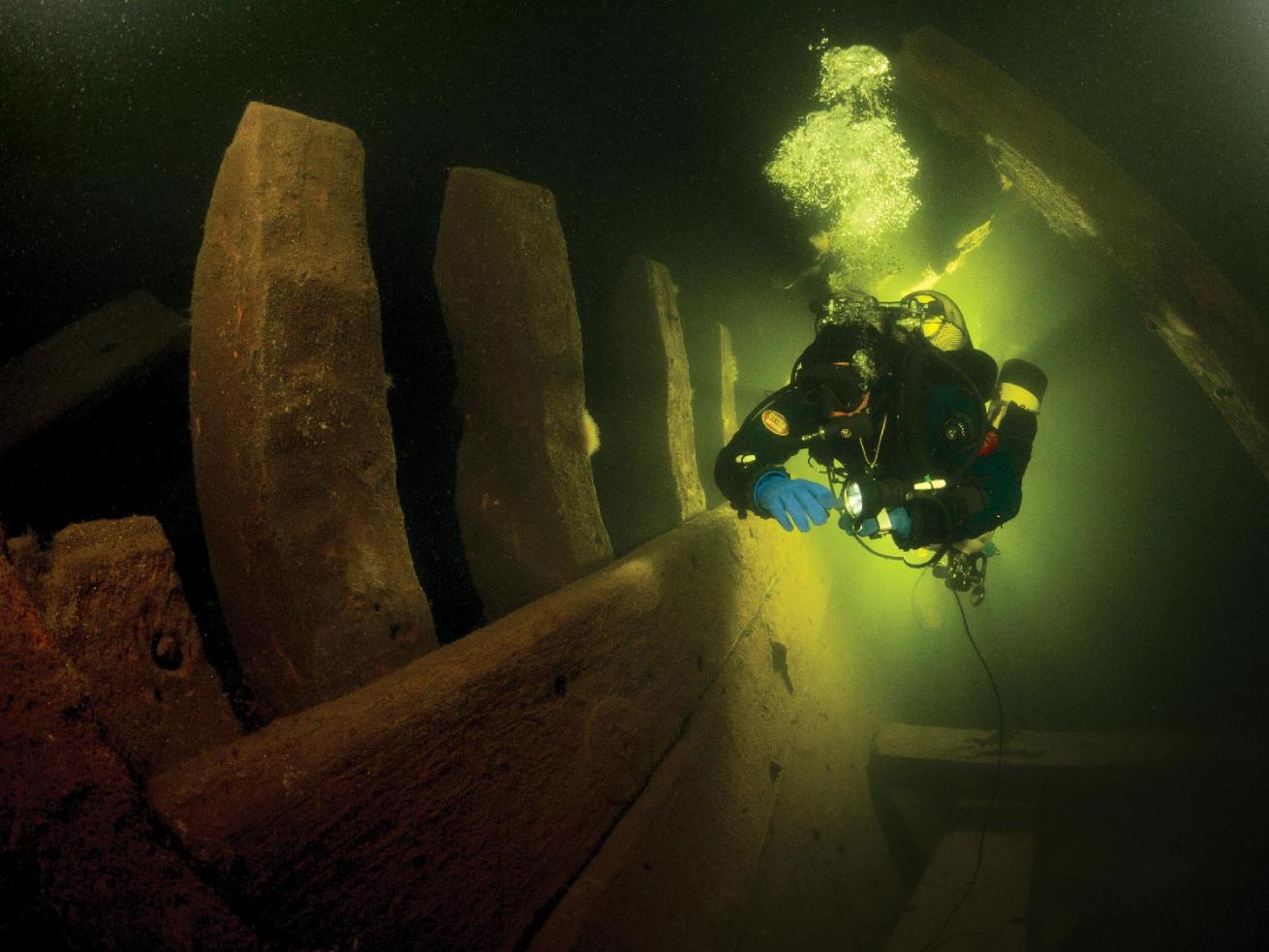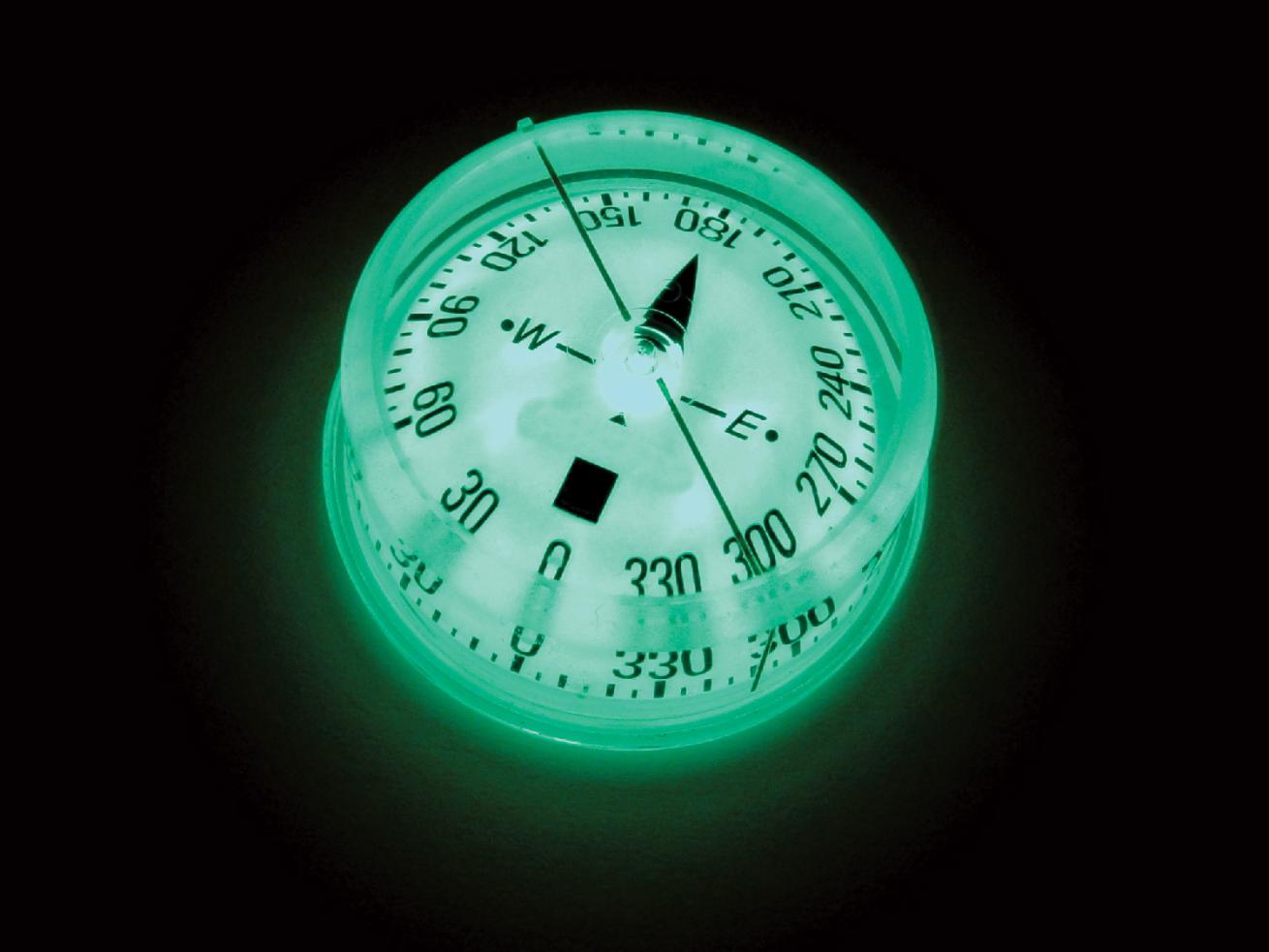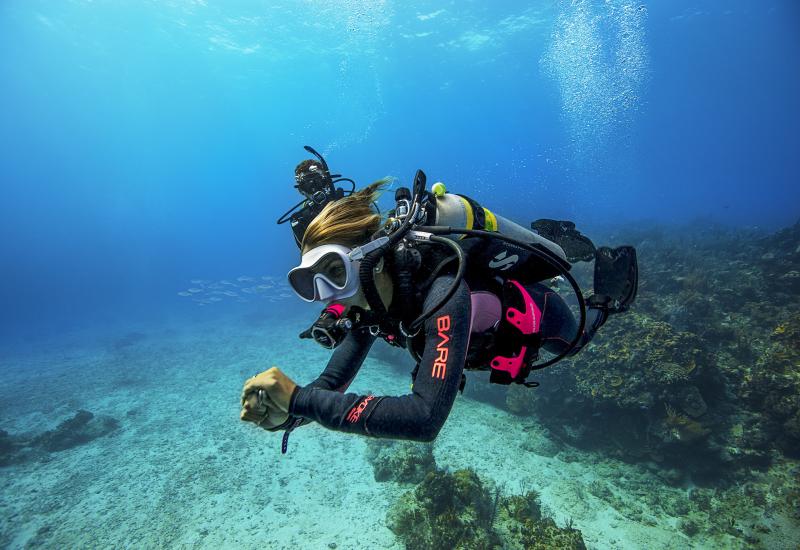Tips for Scuba Diving in Low Visibility

Viktor LyagushkinLearning to make the most of low-viz situations will make you a better diver.
Perfect is a shifting base line, especially when it comes to diving. Despite the challenges of raging current, bone-aching cold or snotty visibility, some among us can find the best in even the worst. Those silver-lining divers can be an envied bunch, enjoying the messiest of conditions like it was a screensaver fantasy. However, this relentless optimism isn’t necessarily an innate ability. Perspective is completely relative. And making the most of the marginal can be a learned skill. Just ask Glen Faith.
“The first two years of my diving career, I didn’t know you could even see underwater,” says the former Illinois Secretary of State Police diver, who now owns and operates Mermet Springs, a popular quarry site and full-service scuba training facility in southern Illinois. “I thought a mask was just something to keep the mud out.”
Becoming a certified search-and-recovery diver meant feeling his way through murky farm ponds and performing skills in near-blackout situations.
“It was diving by Braille. You couldn’t see a thing,” Faith says. “I guess the instructor trusted us when we did our skills because I don’t think he could see us.”
Thankfully, almost 24 years of finding guns, stolen cars and sometimes bodies in highly challenging marine environments from lakes to the Mississippi River didn’t ruin his enthusiasm for diving. Today, his former limestone quarry, which features sunken attractions—including a 727 passenger jet from the 1998 film U.S. Marshals, a full-size train car, a fire truck, a pedal-powered submarine and a submerged petting zoo—draws more than 6,000 divers annually to get certified and share the love of diving.
Tips for Scuba Diving in Low-Visibility or Silt-Out Situations
“The first time I breathed underwater, I never wanted to come back up,” Faith says. “It was one of the most addictive things I’ve ever done in my life. If I could live underwater, you’d never see me again.”
Faith is definitely a glass-perpetually-overflowing type of diver, a living example of the adage that the best diver is the one having the most fun—even if he can’t see much. From his example, we can all learn lessons about how to prepare for and get the most enjoyment from less-than-optimal conditions. So, when the pristine, 100-foot visibility you anticipated turns out to be a cloudy, can-barely-see-your-hand-in-front-of-your-face kind of day, try these simple hacks.
Pack a positive attitude
The most important piece of your foul-visibility kit is your own attitude. Disappointment can kill a good vibe instantly, so shedding the burden of expectation can make the difference between diving under a dark cloud or laughing through your regulator. Rather than obsessing so heavily on what might have been, focus on the possibilities—the challenge of operating in poor visibility will not only make you a better diver, it also might actually be fun.
“Anybody can dive in 100-foot visibility, but the challenge of diving where you can barely see your fins or you have to use a light to see your gauges—that’s another level,” Faith says. “People who practice in reduced visibility are really opened up to a lot more diving opportunities. Sometimes when the viz is blown out, that’s when some of the coolest marine life come out of hiding.”
According to Faith, the right training can seriously improve your outlook. A night diving or limited visibility specialty course will not only improve your skills and preparation, but it will also raise your level of comfort in poor conditions, which will deliver greater enjoyment.

fishmonger/shutterstock.com“Not just a tank light, but a strobe light, so if you get displaced from your buddy, they can see that blink underwater and make their way back to you.”
Dive the right gear
Often the solution for a difficult problem is having the right tool for the job. Diving in poor visibility is no different.
A quality dive light is paramount for navigating, reading gauges and other critical tasks in limited-visibility situations, along with a trusty backup that can be safely stowed and easily accessed. Faith advises not to be blinded by power when choosing a torch because sometimes lumens can be outshined by ergonomics. Make sure your light fits comfortably and securely in your hand. And beyond the point-and-shoot varieties, consider a strobe for your tank.
Read More: How To Stay Calm and Avoid Panic While Scuba Diving
“Not just a tank light, but a strobe light, so if you get displaced from your buddy, they can see that blink underwater and make their way back to you,” says Faith.
Color is another key factor when arming for low viz. “I dive yellow fins and a yellow mask for a reason,” he says. “When visibility is reduced, I need my students or my buddy to see me, and light colors that reflect light underwater make a big difference.”
Dive computers typically offer some type of illumination; recent advances in LED and OLED technology deliver bright, colorful displays that are highly effective in low-viz situations, as well as more affordable.
Slow it all down
The excitement of exploration can often drive divers to dangerous speeds underwater. Just like on the road, speed can quickly escalate challenging low-visibility conditions into a dangerous situation. Planning for a reduced pace on your dive—and being mindful of it during your dive—can be the difference between surfacing with a smile on your face or ending up in the back of an ambulance. Besides being safer, slowing down offers other benefits.
“Most divers, as a rule, swim too fast,” Faith says. “Low-visibility diving forces people to slow down—and even stop—to appreciate the little things along the way.”
Slowing down can also facilitate better discipline and increased performance in other important aspects of diving. Buoyancy is easier to control when you’re not kicking like mad. Your air consumption will improve. And you’ll get lost less often.
“Navigation is key in limited visibility because you can’t look out and see ahead of you for 100 feet, so your compass skills have to be absolutely proficient,” Faith says. “Sometimes you’ll have to make a midwater swim back to the dock or the boat, and you won’t be able to see anything. In aviation, it’s called flying by your instruments—and that’s exactly what you’ll be doing underwater.”
Overall, a successful dive in poor visibility requires a combination of the right equipment, the ability to slow yourself down, and an attitude optimized to make the best of less-than-optimal conditions. It might seem like a difficult equation, but the payoff will be that silver lining we all covet.
The Hack: Best Buddies
Buddy diving is fundamental. But when conditions are pristine and you can seemingly see forever, how many of us really stick to strict buddy protocol? Increasing your discipline to stay within easy reach of your buddy, communicate more often, and truly dive like a team is crucial to a successful dive in low visibility. When conditions are challenging, the added safety and redundancy that optimal collaboration provides is well worth the effort. Because if two eyes are better than one—wouldn’t you really rather have four?










